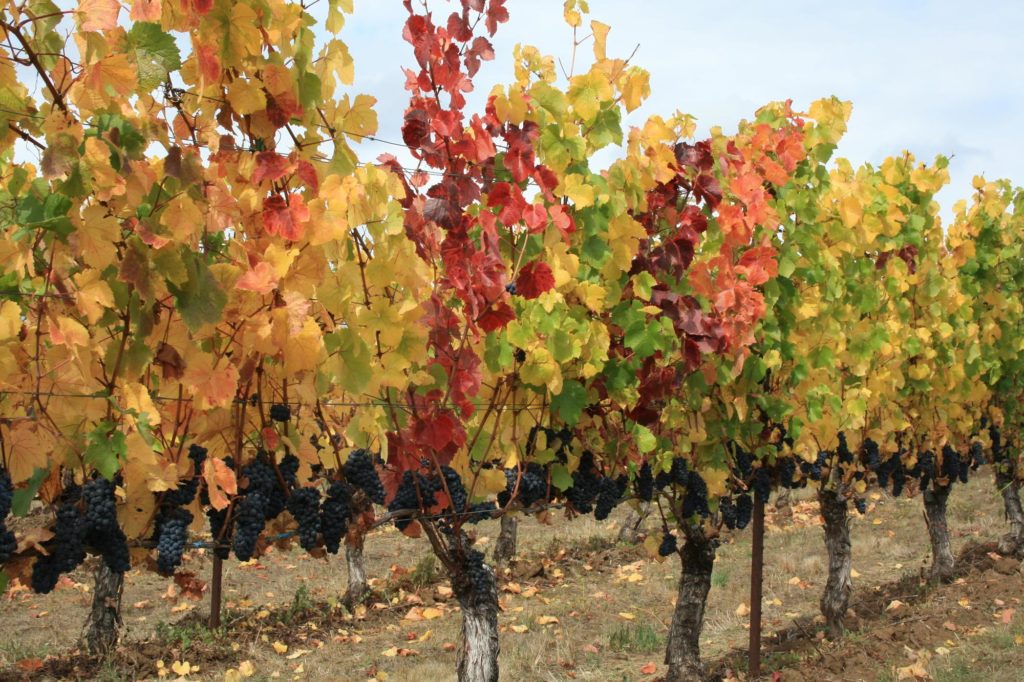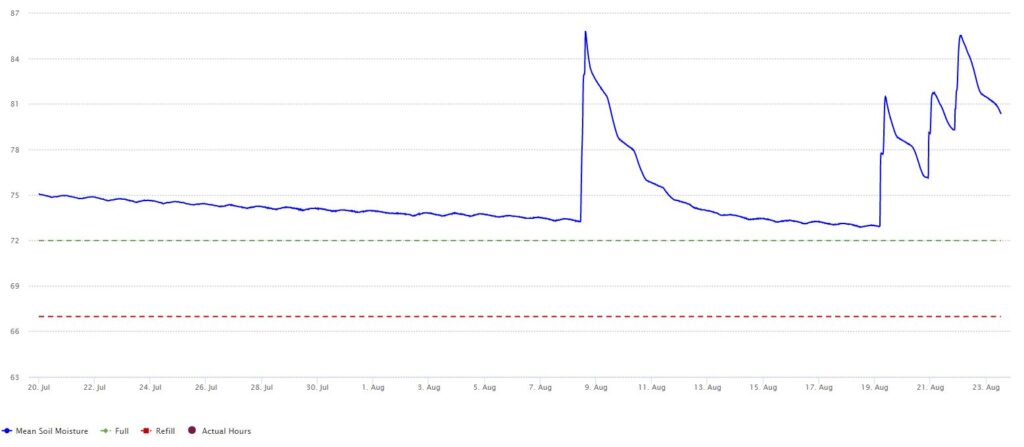Countdown to harvest: How should I be irrigating?
Don't cut off water just yet...
You know it’s harvest season when the winemakers emerge from their cavernous abodes and start making appearances in the vineyard. It’s a magical time, I mean, sometimes they bring donuts! But they also bring with them some funny ideas about irrigation methods, mostly that you make better wine by curtailing water in the weeks leading up to harvest. It’s a silly one-size-fits-all approach. Here’s why.
Thou shalt not irrigate after veraison…why is this wrong?
I’m not sure the logic here, but I think this comes from some idea about “concentrating flavors” and not letting them get diluted by irrigation. It’s ironic given how much watering-back is done in California wineries. More than that though, it’s physiologically erroneous.
At the start of sugar accumulation, the grape berry partially severs contact with the xylem almost exclusively allowing the influx of sucrose-laden sap from the phloem. Excess water is not going to blimp up your berries post-veraison in the same way that it would prior to veraison.
Cutting off water post-veraison harkens back to a time when vineyards were overwatered all season. It’s the equivalent of ordering a diet coke on top of your supersized combo meal. It may make you feel better, but if you haven’t been paying attention to your water usage, you’re still going to jiggle in your bathing suit…I mean you aren’t farming sustainably.
Aside from being irresponsible, we know that overwatering diminishes wine quality especially during lag phase. Vines that experience water stress from berry set through the end of veraison are higher in phenolics than those that aren’t. This makes for better color and better mouthfeel…for red grapes anyway.

What do you want to accomplish with pre-harvest irrigation?
Your main goal as you slide into home is to keep canopies active. Green leaves are functioning leaves. If you want your fruit to keep ripening, you will want your leaves to be making sugar.
Senescing leaves aren’t just turning yellow because they’re dying. They’re actively exporting all the nutrients they contain to the rest of the vine. This is good if you’ve harvested and the only “sink” for nutrients and carbohydrates are your roots, but if you still have fruit attached, a lot of that’s going to go straight into the grapes.
Remember all that potassium you didn’t want in your wine? Senescing leaves dump their contents of K right into the fruit. As an aside, this is another reason to not be excessively stingy about K fertilization in general. Read more on that topic here.

I picked. Now what?
You still need to water regularly. Now that your fruit is gone, you want your vines to focus their energy on building up the permanent parts of the vine for next season. You’ll also want to consider a small post-harvest fertilization, mostly nitrogen and potassium, to strengthen the vines and aid in early canopy establishment next year. Early spring growth is entirely dependent on the vine’s store of carbohydrates before it can start making its own through photosynthesis.
Don’t go nuts. You still want your vines to go dormant. Excess water and nitrogen (the two go hand in hand) can start the vines growing again. This can make your vines more susceptible to winter damage. We typically recommend irrigating as we had been before harvest, stretching out irrigations as the days get shorter and cooler.

Soil moisture probes and you
Post-veraison and post-harvest are not the most critical moment to dial in precise irrigation. However, you can still benefit from knowing how much water you have in your soil, where it is, and how effective each irrigation is. This is where soil moisture probes can help. We’ve written a lot about soil moisture probes in the past.
Happy harvest everybody!


